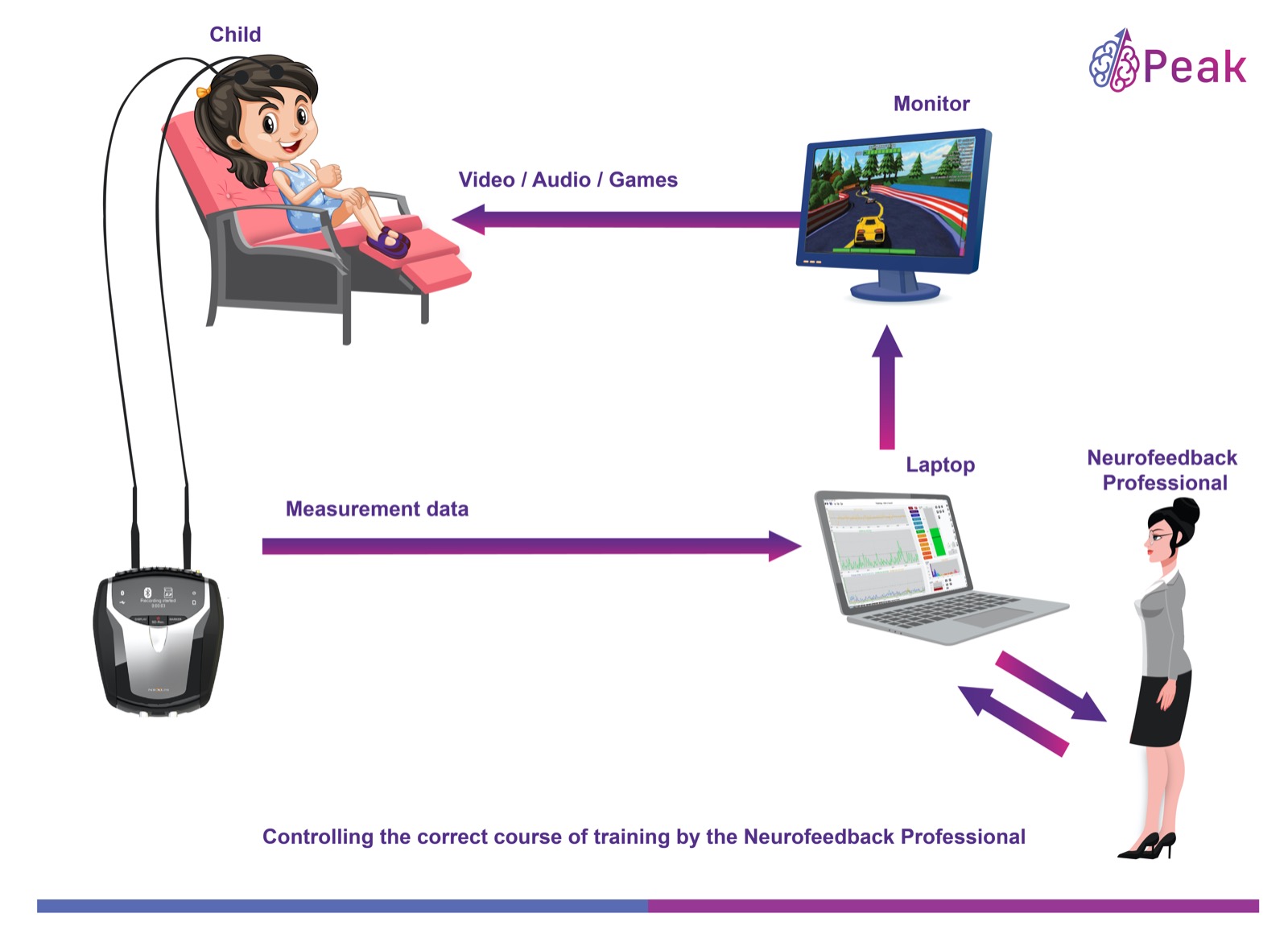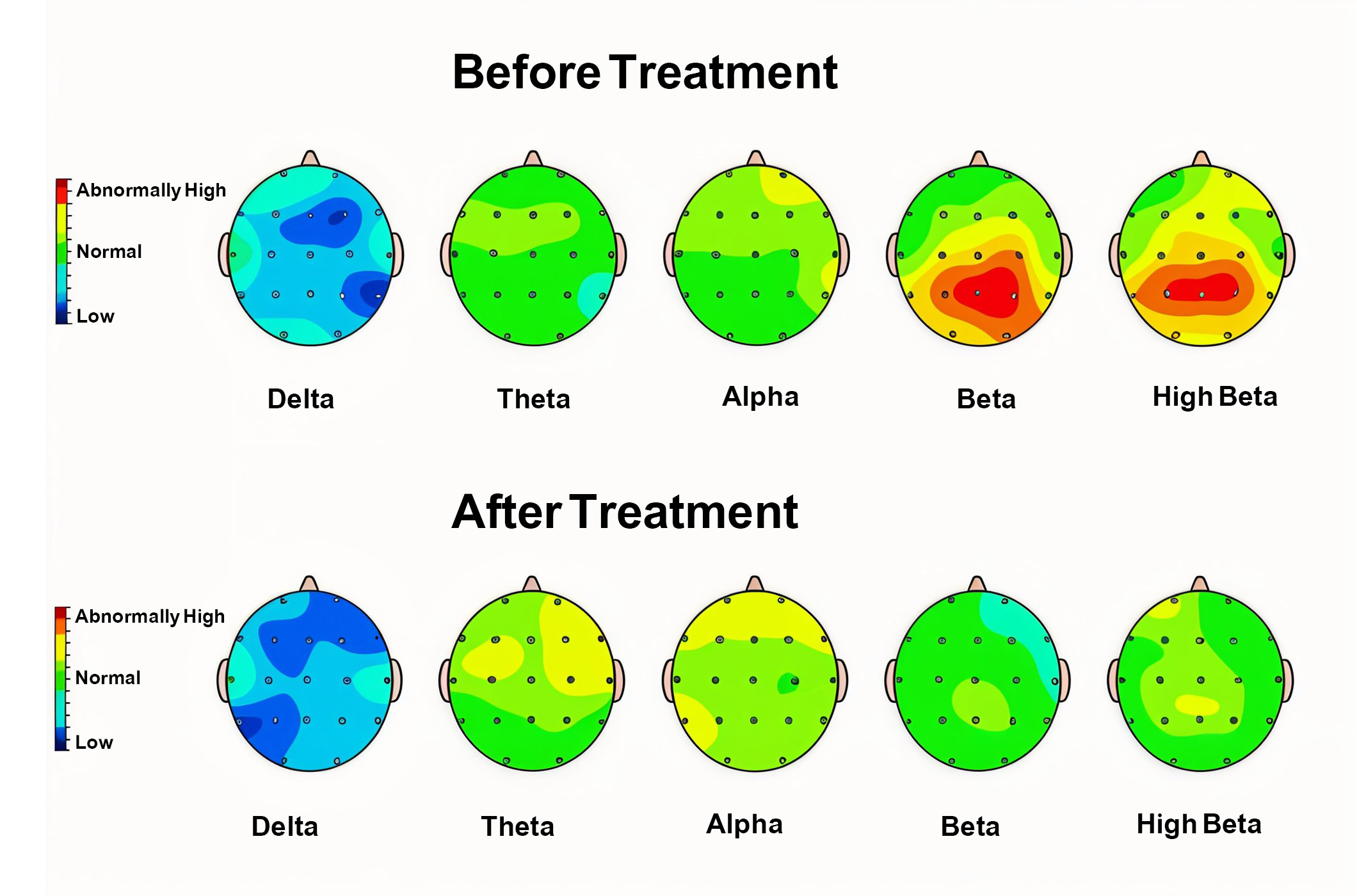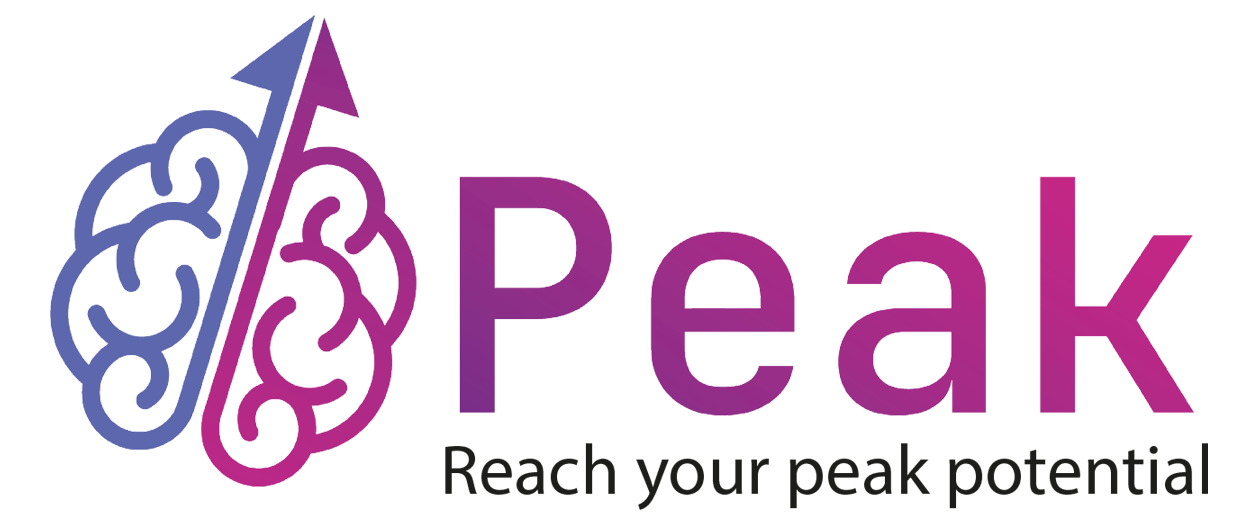Autism Spectrum Disorder (ASD)
What is Autism Spectrum Disorder?
Autism Spectrum Disorder (ASD) is a neurodevelopmental condition characterized by challenges in social interactions, communication, and the presence of restricted and repetitive behaviors and interests. While not all individuals with ASD experience intellectual or language impairments, these difficulties can occur in many cases. The symptoms of ASD can vary widely, ranging from mild to severe. Previously, Asperger’s disorder was considered a milder form on the spectrum, while classic autism represented the most severe form of the condition, but these terms are no longer used as distinct diagnoses under the current diagnostic criteria.

Neurofeedback training for ASD

Neurofeedback is a technique used to train individuals to self-regulate their brainwave activity. In the case of ASD, neurofeedback aims to address the brainwave abnormalities commonly associated with the condition and promote more optimal patterns of brain activity. For example if the ASD individual suffer from high level of Theta waves، manifested as hypersensitivity, the role of neurofeedback is to train the person to decrease the Theta waves and accordingly decrease sensitivity. in other cases the ASD individual may exhibit insufficient Alpha waves (Executive function) and sequentially unable to perform, the role of neurofeedback training is to train the individual to increase Alpha waves and accordingly executive functions will improve.

FDA-approved
Neurofeedback is an effective, FDA approved Intervention and considered as type of therapy for mental health.
Long Lasting
Neurofeedback training is designed to produce lasting changes in brainwaves patterns and self-regulate.

Personalised
It’s tailored for individual’s specific needs and brainwaves patterns. The goal of neurofeedback is to identify and address the specific dysregulations.

Natural and safe
It’s only a response to brainwaves activity. It’s safe, non-invasive, non-pharmacological, to brain registration.
Here's how neurofeedback process can potentially help correct brainwave abnormalities in ASD:
Individualized Approach:
Neurofeedback therapy is tailored to the specific needs of each individual with ASD. A comprehensive assessment, which may include techniques like quantitative electroencephalography (QEEG), helps identify the unique brainwave patterns and areas of dysregulation in the individual's brain.
Regulation of Brainwaves:
Neurofeedback aims to promote self-regulation of brainwave activity by providing real-time feedback to the individual. During a neurofeedback session, the person with ASD engages in activities that encourage specific brainwave patterns associated with desired states, such as increased focus, relaxation, or reduced sensory sensitivities.

Decrease in excess Beta waves after neurfeedback in ASD.
Reinforcement and Training:
The individual receives immediate feedback in the form of visual or auditory cues when their brainwave activity moves towards the desired patterns. Over time, this feedback helps the person learn to self-regulate their brainwaves and achieve a more optimal state of functioning.
Targeted Symptom Improvement:
Neurofeedback can be used to address specific symptoms commonly associated with ASD. For example, if an individual has challenges with attention and focus, neurofeedback can target improving these areas by training the corresponding brainwave patterns.
Complementary Therapy:
Neurofeedback is often used as part of a comprehensive treatment plan for individuals with ASD, alongside other interventions such as behavioral therapies, speech therapy, and occupational therapy. It can be integrated into a holistic approach that addresses the unique needs and challenges of each individual.

How ASD Brains Work Differently?
Autism Spectrum Disorder (ASD) is associated with distinct patterns of brainwave activity.
Here’s an explanation of how the brains of individuals with ASD may work differently in terms of brainwaves:
Overconnectivity and Underconnectivity:
Research suggests that individuals with ASD may exhibit both overconnectivity and underconnectivity in brain networks. Overconnectivity refers to heightened neural connections within specific brain regions, leading to increased local processing and focus on details. Underconnectivity, on the other hand, refers to reduced communication and integration between different brain regions, impacting the coordination and synchronization of neural activity.
Altered Brainwave Oscillations:
Brainwave oscillations, which represent the rhythmic electrical activity in the brain, are also impacted in individuals with ASD. Studies have shown differences in the patterns and synchronization of brainwaves, particularly in the gamma, alpha, and theta frequency bands. Gamma oscillations, associated with cognitive processes like attention and perception, may be weaker or less synchronized in individuals with ASD. Alpha oscillations, related to inhibitory processes and attentional control, can also exhibit abnormalities. Additionally, disruptions in theta oscillations, involved in memory and cognitive control, have been observed.
Sensory Processing Differences:
Individuals with ASD often experience sensory sensitivities or atypical responses to sensory stimuli. Brainwave studies have indicated that these sensory processing differences may be linked to alterations in neural responses and brainwave patterns. For example, increased theta oscillations have been associated with sensory hypersensitivity, while decreased alpha oscillations may be related to difficulties in filtering and processing sensory information.
Executive Functioning Challenges:
Executive functions, such as planning, organization, and cognitive flexibility, can be impaired in individuals with ASD. Studies have identified specific brainwave abnormalities associated with executive functioning difficulties. These include reduced theta and alpha power in frontal brain regions, which are crucial for executive control processes.
It’s important to note that these brainwave differences are observed at a group level and may not be consistent for all individuals with ASD. The precise mechanisms underlying these differences and their relationship to the core symptoms of ASD are still being explored. Brainwave analysis can provide insights into the neural functioning of individuals with ASD and help inform the development of targeted interventions and therapies.
Who has Autism Spectrum Disorder?

The occurrence of Autism Spectrum Disorder (ASD) has been rapidly rising over the past few decades. Recent statistics from the Center of Disease Control (CDC) highlight this concerning trend. A mere decade ago, the prevalence was reported as 1 in 69 children(1.4%), whereas now it is estimated that approximately 1 in 44 (2.2%) children are affected by ASD. It is worth noting that boys are diagnosed with ASD at a rate four times higher than girls. This data underscores the increasing prevalence of ASD and the gender disparity in diagnosis.
Core Symptoms of ASD

Symptoms of autism spectrum disorder typically become apparent around the ages of 2 or 3, although in more severe cases, developmental delays may be noticeable even before the age of 1. While it is important to remember that ASD is a spectrum disorder and varies in presentation, the following list outlines several common symptoms:
- Difficulties in non-verbal communication, including challenges in understanding social cues and interpreting facial expressions.
- Impairments in reciprocal communication, making it challenging to engage in back-and-forth interactions.
- Speech delays or significant impairments in language development.
- Engaging in repetitive movements, such as rocking or hand flapping.
- Exhibiting a strong adherence to routines and habits, displaying resistance to change.
- Demonstrating repetitive use of objects, such as lining up toys or constantly turning things upside down.
- Sensitivity to sensory stimuli, experiencing heightened reactions to certain sounds, textures, or lights.
- Displaying intense focus or preoccupation with specific interests or subjects.
- Echolalia, the repetition of words or sentences spoken by others.
- Limited eye contact during social interactions.
- Narrow or highly specific food preferences.
- Engaging in self-injurious behaviors, such as repetitive head-banging, scratching, or biting.
- Experiencing social isolation, particularly for older individuals with ASD who live independently.
It is important to note that not all individuals with autism will exhibit every symptom listed, as ASD encompasses a broad range of presentations and characteristics.
What Causes Autism Spectrum Disorder?

Current understanding indicates that Autism Spectrum Disorder (ASD) does not stem from a single cause. Extensive research suggests a complex interplay between genetic factors and environmental influences that can contribute to the development of the condition. Several circumstances have been identified as potential risk factors for ASD, including:
- Genetic Component: Certain genes may increase the susceptibility to the disorder.
- Environmental Influences: Including prenatal exposure to certain substances or toxins, and environmental influences during early development combined with genetic predispositions potentially trigger the manifestation of ASD.
- Risk Factors: These include advanced parental age, having a sibling with ASD, extremely premature birth or low birth weight, exposure to the medication valproate during fetal development, and pregnancies with short intervals between them.
Book Your Consultation
Giving you the opportunity to
Answer all your questions
Assess whether our services are suitable for your needs

